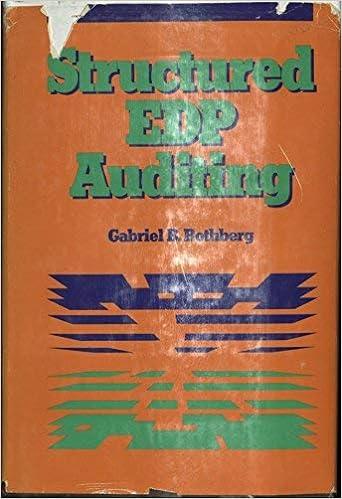Question
Company Name: Abcde Pty Ltd The company began operations as a retailer on 1 July 2017. It buys and sells one inventory item, derrings, from
Company Name: Abcde Pty Ltd
The company began operations as a retailer on 1 July 2017. It buys and sells one inventory item, derrings, from a leased warehouse in the outer suburbs of Melbourne.
The company is registered for GST which it pays quarterly. Assume GST was last paid on 30 June. It uses the Weighted Average cost allocation method and the perpetual inventory recording method.
The company uses the straight line depreciation method for office furniture and computers and the reducing balance method for motor vehicles.
The company employs two people who are rostered over a seven day working week. The employees are paid fortnightly up to and including the day of payment. There are no penalty wages.
The company has one debtor (Debtor1) and one creditor (Creditor1). Terms for all credit sales and purchases are 30 days
Relevant information
1. The company has the following opening balances at the 1 July in the current financial year:
Cash at Bank: $24,526.00 Accounts receivable: $4,518.00 Allowance for doubtful debt: $478.00 Inventory: $10,640.00 Motor vehicle: $21,827.00 Accumulated depreciation motor vehicle: $2,777.00 Accounts payable: $4,439.00 Bank loan owing (due in 20 months): $10,920.00 Office furniture: $11,927.00 Accumulated depreciation office furniture: $1,416.00 Office supplies: $573.00 Share capital: $39,239.00 Retained earnings: balance amount $14,742.00
2. Transactions for the month (all dollar amounts include GST where applicable).
02 July Sales on credit 66 units 05 July Sales on credit 63 units
11 July Sales on credit 78 units 18 July Sales on credit 54 units 22 July Sales on credit 59 units 29 July Sales on credit 66 units 03 July Paid Wages (ignore PAYG tax) $2,150.00 17 July Paid Wages (ignore PAYG tax) $2,294.00 30 July Paid rent for the current month $2,380.00 07 July Paid insurance $2,402.00
22 July Received advertising invoice (due in 30 days) $568.00 15 July Purchased computer on credit $2,441.00 07 July Purchased inventory on credit 25 units at the cost per unit of $25.00 14 July Purchased inventory on credit 23 units at the cost per unit of $27.00 20 July Purchased inventory on credit 21 units at the cost per unit of $25.00 24 July Purchased inventory on credit 29 units at the cost per unit of $28.00 30 July Purchased inventory on credit 30 units at the cost per unit of $27.00 18 July Received payment from accounts receivable $1,124.00 04 July Received payment from accounts receivable $961.00 17 July Received payment from accounts receivable $1,052.00 13 July Purchased office supplies on credit $622.00 26 July Paid motor vehicle expenses $115.00 07 July Paid accounts payable $1,170.00 18 July Paid accounts payable $1,489.00 04 July Paid accounts payable $935.00
3. Additional information: Selling Price per unit (GST inclusive) $55.00
Insurance paid from the first of the current month and for: 7 months in total. Insurance commences from the first of the month in which it is paid.
All asset purchases and expenses except wages include GST Cost of opening inventory items per unit $20.00 Depreciation rate motor vehicle 20% Residual value motor vehicle: $2,602.00
Depreciation rate office furniture 20% Residual value office furniture: $536.00
Regardless of purchase date, company policy is to depreciate new assets for 15 days in the month of purchase. Depreciation rate computer 35%
No residual value is expected for computers.
The company counted inventory at the end of the month. They discovered that 8 units were missing and these must be removed from inventory.
Office supplies on hand at end of the month were $257.00 At the end of the month the company records potential bad debts expense using the percentage of
sales method. The business uses 1% of sales to determine estimated bad debts. Interest owing on the bank loan at the end of the month is $60.00
REQUIRED:
SORT THE TRANSACTIONS IN DATE ORDER. This is critically important for any inventory transactions (sales and purchases) as the value of inventory is calculated using the moving weighted average method.
manually prepare general journal entries to enter all relevant July transactions (including the opening entry and all adjusting entries).
prepare a stockcard for the month (this is required to help you track inventory movements and calculate COS) using the moving weighted average cost method. Post all journals to the ledger.
Prepare an adjusted trial balance.
Step by Step Solution
There are 3 Steps involved in it
Step: 1

Get Instant Access to Expert-Tailored Solutions
See step-by-step solutions with expert insights and AI powered tools for academic success
Step: 2

Step: 3

Ace Your Homework with AI
Get the answers you need in no time with our AI-driven, step-by-step assistance
Get Started


